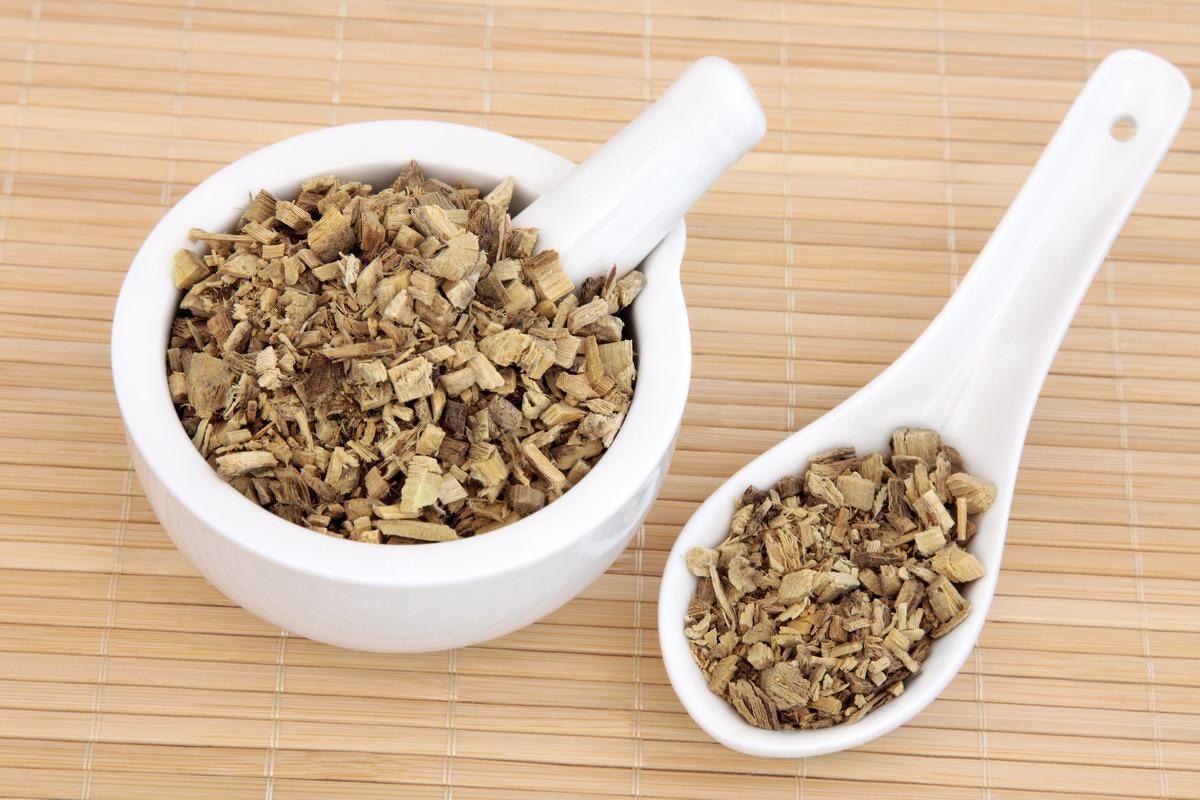The ongoing coronavirus disease 2019 (COVID-19) pandemic caused by severe acute respiratory syndrome coronavirus 2 (SARS-CoV-2) has led to a huge public health emergency.
Although several clinical trials have been conducted to identify effective drugs for the treatment of COVID-19, many promising drugs such as hydroxychloroquine, remdesivir, and lopinavir were shown to have little effect on hospitalized COVID-19 patients.
A popular traditional Chinese medicine (TCM), Glycyrrhiza uralensis Fisch (licorice, Gan-Cao) has demonstrated antiviral activity against H1N1 influenza and other SARS-CoV viruses, but information on its use against SARS-CoV-2 is scarce.
 Study: Natural triterpenoids from licorice potently inhibit SARS-CoV-2 infection. Image Credit: marilyn barbone/Shutterstock
Study: Natural triterpenoids from licorice potently inhibit SARS-CoV-2 infection. Image Credit: marilyn barbone/Shutterstock
In silico study of licorice products against SARS-CoV-2
In a study recently published in the Journal of Advanced Research, researchers from China conducted an experiment to determine the potency of licorice and related TCM products against SARS-CoV-2. The main aim of the work was to discover small-molecule inhibitors that can target the SARS-CoV-2 spike protein receptor-binding domain (RBD) from licorice.
The researchers performed virtual screening of 125 small molecules obtained after optimization of Glycyrrhiza uralensis Fisch against the ligand structure RBD of SARS-CoV-2 spike protein (S) and non-structural protein – 7 (nsp7). Surprisingly, glycyrrhetinic acid (GA), 3-O-β-D-glucuronosyl-glycyrrhetinic acid (GA-g), and licorice-saponin A3 (A3) displayed remarkably high affinity compared to glycyrrhizic acid (GA-gg), which was earlier reported as a SARS-CoV-2 inhibitor. Further evaluation of the potential hits identified from virtual screening was performed using studies in Vero E6 cells and a pharmacokinetic study.
Vero cell study of licorice against SARS-CoV-2
The examination of the inhibitory activities of licorice triterpenoids against SARS-CoV-2 spike protein by enzyme-linked immunoassay (ELISA) demonstrated that at 10 μM concentration of GA, GA-g, and A3 they displayed inhibition rates of 51.9%, 50.2%, and 45.1%, respectively, which were significantly higher than other licorice compounds such as GA-gg. Six non-licorice triterpenoids were also evaluated among which ursolic acid and betulinic acid exhibited observable inhibitory activities. The half-maximal inhibitory concentration (IC50) values for GA, GA-g, A3, betulinic acid, and ursolic acid were found to be 10.9, 14.1, 8.3, 15.1, and 9.0 μM, respectively.
Similar results were observed when GA, GA-g, and A3 were tested in Vero E6 cells infected with SARS-CoV-2 pseudovirus. Although the non-licorice compounds ursolic acid and betulinic acid exhibited noticeable inhibitory activity, they were not further evaluated due to significant cytotoxicity.
The inhibitory activities of GA and A3 against SARS-CoV-2 were assessed in Vero E6 cells using remdesivir as a positive control and it revealed that GA and A3 both possess significant inhibitory activity against SARS-CoV-2 at 3 μM. Viral RNA levels decreased in a dose-dependent manner with a half-maximal effective concentration (EC50) of 3.17 μM for GA and 75 nM for A3.
Since RNA-dependent RNA polymerase (RdRp) is one of the main targets for SARS-CoV-2 and the proteins nsp12, nsp7, and nsp8 are its essential components, the researchers assessed the binding affinities of A3 and GA with nsp12, nsp7, and nsp8 through surface plasmon resonance (SPR) analysis. The results revealed a higher binding affinity for A3 to nsp7 compared to the other two proteins, suggesting that nsp7 may be the desirable target for A3.
Pharmacokinetic study of licorice against SARS-CoV-2
The pharmacokinetics (PK) study findings showed that both GA and GA-gg were easily absorbed into the circulation and were inter-convertible. Even the abundant GA-gg exhibits low anti-viral activity and may reduce ACE2 expression in the lungs; it could readily be metabolized into GA, which is an active inhibitor of SARS-CoV-2.
The elimination rate of GA was low and thus its plasma concentration between 8-24 hours was high. GA was also obtained from lung samples, as lungs are the key target organ for SARS-CoV-2. When A3 was administered intravenously in rats, it displayed first-order elimination with a slow elimination rate and plasma concentration of 48.9 μM at one hour, which decreased to 27.3 μM at 24 hours.
PK data demonstrating the highest plasma concentration of GA as 7.7 μM after the administration of 200 mg/kg licorice extract along with EC50 of GA (3.17 μM) supports the use of licorice as a potent drug for COVID-19 prevention and treatment after oral administration.
Conclusion
The researchers concluded that licorice triterpenoids could be promising candidates for anti-SARS-CoV-2 drug development as confirmed by Vero cell models and PK studies. The licorice compounds A3 and GA inhibit SARS-CoV-2 by targeting different proteins i.e., nsp7 and S-RBD protein, respectively.
The researchers recommended further evaluation of the effects of GA-gg against COVID-19 as a pro-drug of GA in both clinical and animal studies.
The multi-components and multi-targets mode of action is a unique feature of herbal medicines and contributes to the overall clinical effects of licorice in the treatment of COVID-19.”
Yang Yi, Junhua Li, Xinyuan Lai, et. Al. 2021. Natural triterpenoids from licorice potently inhibit SARS-CoV-2 infection. Journal of Advanced Research. doi: https://doi.org/10.1016/j.jare.2021.11.012 https://www.sciencedirect.com/science/article/pii/S2090123221002307?via%3Dihub
Posted in: Medical Science News | Medical Research News | Disease/Infection News
Tags: ACE2, binding affinity, Cell, Coronavirus, Coronavirus Disease COVID-19, Cytotoxicity, Drugs, Enzyme, H1N1, Hydroxychloroquine, Immunoassay, Influenza, Ligand, Lopinavir, Lungs, Medicine, Molecule, Pandemic, Pharmacokinetics, Polymerase, Protein, Pseudovirus, Public Health, Receptor, Remdesivir, Research, Respiratory, RNA, SARS, SARS-CoV-2, Severe Acute Respiratory, Severe Acute Respiratory Syndrome, Spike Protein, Structural Protein, Syndrome

Written by
Susha Cheriyedath
Susha has a Bachelor of Science (B.Sc.) degree in Chemistry and Master of Science (M.Sc) degree in Biochemistry from the University of Calicut, India. She always had a keen interest in medical and health science. As part of her masters degree, she specialized in Biochemistry, with an emphasis on Microbiology, Physiology, Biotechnology, and Nutrition. In her spare time, she loves to cook up a storm in the kitchen with her super-messy baking experiments.
Source: Read Full Article






